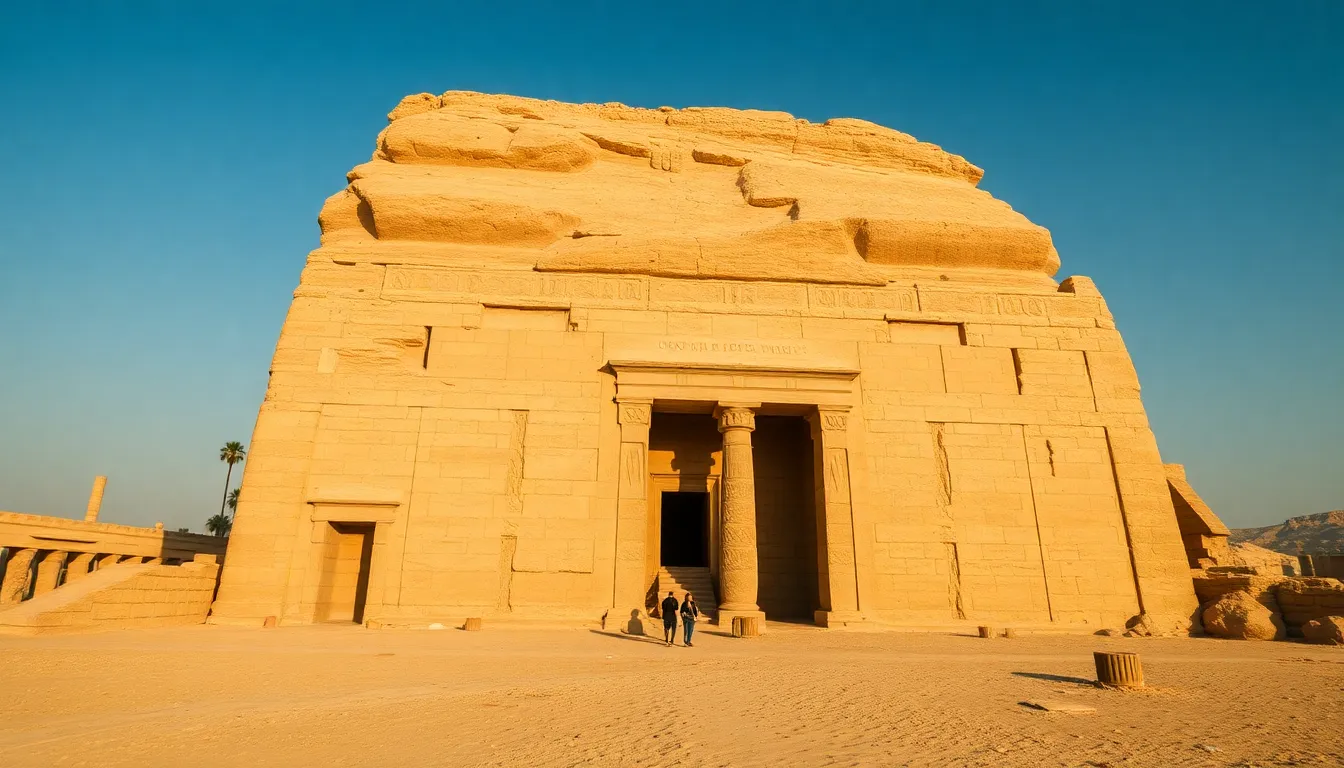The Discovery of the Royal Tombs at Saqqara
I. Introduction
Saqqara, located just southwest of Cairo, holds a prominent place in the annals of ancient Egyptian history. This vast necropolis served as the burial site for many pharaohs and elite members of society over several dynasties. The discovery of royal tombs in this area has shed new light on the practices and beliefs of ancient Egyptians.
In recent years, archaeologists have unearthed a series of royal tombs that not only highlight the grandeur of the ancient rulers but also provide invaluable insights into their lives and the society they governed. This significant find is poised to enhance our understanding of ancient Egypt’s rich history.
The importance of these discoveries extends beyond mere archaeological interest; they invite us to reconsider our understanding of ancient Egyptian culture and its enduring legacy.
II. Historical Context of Saqqara
Saqqara has long been recognized as a vital burial ground, with its usage dating back to the early dynastic period of ancient Egypt. It is best known for the Step Pyramid of Djoser, one of the earliest monumental stone structures in history.
The site served as a burial place for various dynasties, including:
- The Third Dynasty, with the Step Pyramid of Djoser.
- The Fifth Dynasty, with numerous mastabas and elaborate tombs.
- The Sixth Dynasty, where many prominent figures were laid to rest.
Over the years, Saqqara has seen numerous discoveries, including mummified remains, intricate frescoes, and vast burial complexes. Each excavation has contributed to our understanding of the practices and beliefs of the ancient Egyptians.
III. The Discovery Process
The discovery of the royal tombs at Saqqara began in earnest in 2020, with a series of excavations led by a team of Egyptian archaeologists. The timeline of this discovery has unfolded as follows:
- 2020: Initial excavations begin, revealing the entrance to a large burial site.
- 2021: Continued work uncovers multiple chambers and artifacts.
- 2022: The team announces the identification of several royal tombs linked to ancient kings.
Key figures in this excavation include renowned Egyptologists and local archaeologists who have dedicated their careers to the study of ancient Egyptian civilization. Their collaborative efforts have been instrumental in the findings.
Modern techniques played a crucial role in the discovery process, including:
- Ground-penetrating radar to locate hidden chambers.
- 3D imaging technology to map the tomb structures.
- Advanced conservation methods to prevent damage to artifacts.
IV. Description of the Royal Tombs
The architectural features of the newly discovered royal tombs reflect the grandeur and sophistication of ancient Egyptian design. Key characteristics include:
- Intricate carvings and hieroglyphics adorning the walls.
- Elaborate burial chambers designed to honor the deceased.
- Complex layouts featuring multiple rooms and passageways.
Among the artifacts found within these tombs are:
- Statues and figurines that represent deities and the deceased.
- Jewelry and precious items that illustrate the wealth of the individuals buried.
- Tools and offerings meant to accompany the deceased into the afterlife.
The analysis of burial practices revealed a continuation of ancient rituals, showcasing how the beliefs surrounding death and the afterlife persisted through time. Rituals such as the careful mummification process and the inclusion of grave goods were prevalent.
V. Significance of the Findings
The discoveries at Saqqara offer profound insights into the lives of ancient Egyptian royalty. They allow historians to understand better:
- The governance structure and political dynamics of ancient Egypt.
- The social hierarchies present in society, as evidenced by the elaborate burial practices.
- The religious beliefs and rituals that were integral to the culture.
Moreover, these findings contribute significantly to the timeline of Egypt’s history, helping to fill gaps in our understanding of different periods and their associated practices.
VI. Challenges Faced During Excavation
The excavation team encountered numerous challenges, including:
- Environmental obstacles: Saqqara’s harsh climate posed risks to both the site and the artifacts.
- Preservation issues: Many ancient artifacts required delicate handling to avoid deterioration.
- Political and cultural sensitivities: Navigating the local and national interests regarding the site was essential for the project’s success.
VII. Future Research and Exploration
As research continues, archaeologists are delving deeper into the findings from the royal tombs at Saqqara. Ongoing studies focus on:
- Detailed analysis of the artifacts to uncover more about daily life in ancient Egypt.
- Exploration of adjacent areas that may yield further discoveries.
- Collaborations with international archaeologists and institutions to share knowledge and techniques.
The potential for further discoveries in Saqqara remains high, as the site is vast and largely unexplored. Each excavation has the possibility of unveiling new insights into this ancient civilization.
VIII. Conclusion
The discovery of the royal tombs at Saqqara marks a pivotal moment in the field of Egyptology. It not only enriches our understanding of ancient Egyptian culture but also emphasizes the need for continued archaeological research.
The lasting impact of these findings will reverberate through the field, inspiring future generations of archaeologists and historians. It is crucial to support and maintain interest in such research, as it uncovers the mysteries of our shared human past.




